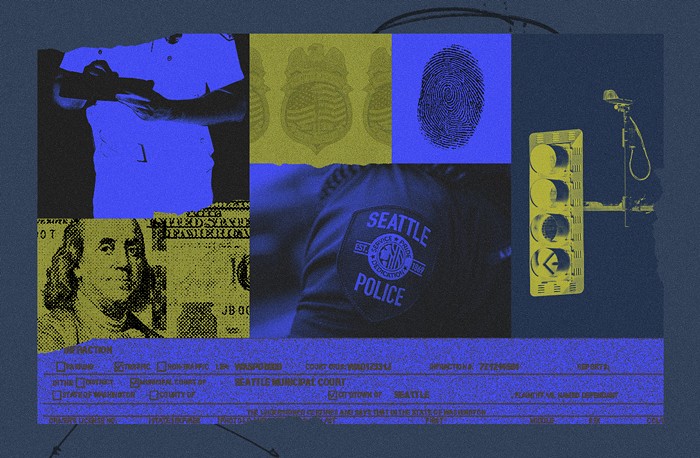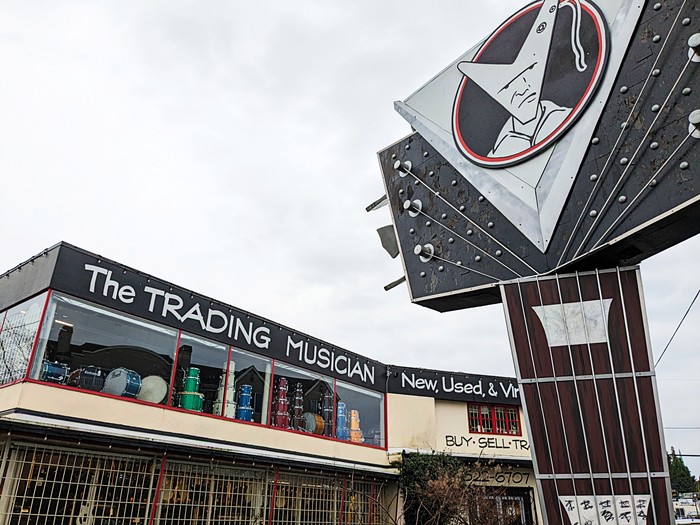
The Seattle Department of Transportation (SDOT) has just released another report on how bike share is faring in Seattle. For the most part, Seattle loves its bikes and is even beginning to park them more responsibly. The only hiccup is that over half of surveyed bikes from the company Lime were deemed "unrentable."
Free-floating bike share bikes have littered our streets since 2017. Seattle was the first city to implement the technology. The bikes are convenient last-mile solutions accessed via app that have only gotten more fun to use as the technology has improved (hello, electric-assist, happy to have you). Currently, only Lime and Uber's Jump bikes operate in Seattle. Lyft has a permit to operate bikes here but we've seen neither hide nor hair of them.
None of that will be news to most Seattleites, but people may be shocked by the number of surveyed bikes that were found to be unrentable in SDOT's July through September report. For Jump, 35.3 percent of surveyed bikes were unrentable. For Lime, 63.4 percent of bikes were unrentable. That's a stark difference.
Previously, SDOT had not kept track of dead batteries and unrentable bikes.
"In early September (mid-way through Q3)," Ethan Bergerson, a spokesperson for SDOT, told The Stranger via email, "we began hearing concerns that a large portion of the Lime fleet could not be rented due to dead batteries, so we asked our inspectors to begin tracking this as well." The staff attempted to rent about 150 randomly selected bikes to track how many bikes were not available for rental.
Lime refused to speak on the record about these issues.
However, in early September, Lime reportedly was experiencing a series of issues, what Lime spokespeople described to The Seattle Times as "a perfect storm" in which a large number of Lime bikes weren't able to be ridden. During this stretch of time, dead batteries plagued Lime. The bike batteries have to be replenished nightly.
According to SDOT's report, what may have rendered the bikes "unrentable" were issues like low battery power and a mechanical unlocking error. The locking feature on Lime bikes operates via battery power as well.
"Lime informed us that the large number of unrentable bikes was due to a recent fire in their maintenance facility and that they were working to resolve the problem," Bergerson said. According to the September 12 Times article, the fire happened in August.
SDOT has reprimanded Lime by docking the total number of bikes the company is allowed in the city by 500. There are now 4,507 Lime bikes and 4,567 Jump bikes in Seattle. Lime has mostly shifted away from its dockless bikes and is instead focusing on electric scooters. Seattle is the only city on the West Coast that still has Lime bikes.
"Shared bikes are only beneficial when they are charged and ready to go," Bergerson said, "so bike-share companies are required to keep their bikes in good working order and available to rent."
While SDOT didn't previously try to rent bikes in their audits, they have always surveyed safety and maintenance issues. Nearly 24 percent of Lime bikes were "not in good working order," compared to nearly 13 percent of Jump bikes. That's a sharp increase from Q2 where 5.6 percent of Lime bikes and 3.4 percent of Jump were not in good working order—which means, for example, that the bikes could have been missing kickstands or were in maintenance mode.
Ridership remains high for bike share bikes.
"Overall, riders took over 750,000 trips in Q3 and over 1.6 million trips year-to-date," reads the report. "If bike share were a King County Metro bus route, these Q3 trip totals would place it in the top ten King County bus lines for ridership during that period."
With the new swarm of bikes that dotted sidewalks and bike paths and even the bottoms of some lakes, came concerns like: "How can we stop these damn bikes to stop clogging up where we're walking?"
SDOT has been trying to find solutions like building bike parking zones and corrals. According to the Q3 report, this seems to be working.
Incorrect parking has visibly gone down (and there were fewer cases of bikes parked in non-ADA compliant ways). There was a roughly 18 percent reduction in incorrect parking overall from Q2 to Q3, according to the report. However, SDOT pointed out that the surveyed areas in Q3 had more available parking than the areas surveyed in Q2. Lime and Jump both remain marginally out of compliance for how many of their bikes were found violating correct parking rules.
"We can’t say whether parking has improved everywhere," Bergerson said, "but we are hopeful we’re heading in the right direction. Keep in mind that these random audits occurred in different neighborhoods than the previous report."



















